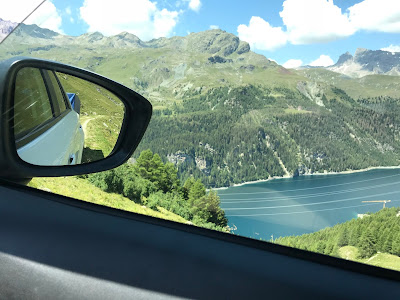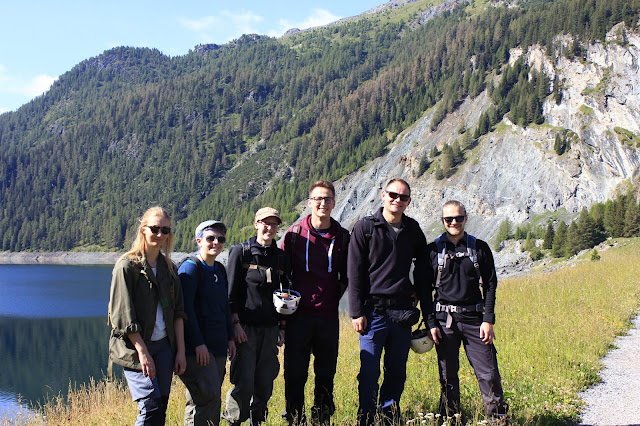SISA
1, 2018
23.07.2018: Theory 1, Hotel Piz Platta,
8:30-13:15 /18:30
Session
1, Part 1, Rouven Turck, UZH, FB PRA
8:30 – 9:00
Welcome to SISA
2018 – Introduction to prehistoric mining in the Oberhalbstein (GR)
Main goals and
topics of the SISA 2018 contents are introduced to the audience.
The first paper deals
with current archaeological research in the Oberhalbstein valley. Local
features of prehistoric mining and smelting will be presented: Mining
galleries, collapsed shafts, roasting beds and smelting furnaces that have been
archaeologically documented since 2013.
A brief
comparative overview of findings and features from Eastern Alpine mining and
smelting activities completes this introduction.
Session 1, Part 2, Philippe Della Casa, UZH, FB PRA
9:00 – 9:45
Survey Methods
Alpine landscapes,
and mining landscapes in mountain regions in particular, require specific and
adapted methods of archaeological survey and investigation. In the Oberhalbstein
valley, documental and both non-invasive and invasive prospection techniques
have successfully been applied: Archival data mining, traditional ground survey
by terrain walking, geophysical survey (geomagnetics, electrical resistivity
tomography), sediment coring with augers, and small test pits. Together with
excavations in selected sites, a wealth of complementary data could be gained
in order to address spatial, chronological and technical questions on mining
activities.
Session 1, Part 3, Donat Fulda SGTK/ETHZ
10:00 – 10:30
Geology 1: Geology
of the Oberhalbstein valley
Why are important
copper resources located in the Oberhalbstein valley? What kind of rocks do we
find there? What do they tell us about their formation and origin?
We will briefly
introduce the geology of the Alps and the regional geological setting during
our morning lecture. Later on, with our afternoon field trip, we will focus on
the geology of the Oberhalbstein area with its tectonic history, the necessary
conditions for ore formation and the occurring wide variety of rock units. During
that walk, we will come across marine sediments, volcanic and metamorphic rocks
as well as rocks originating from the earth’s mantle that are partially
enriched with copper-bearing minerals.
Session 1, Part 4, Gert Goldenberg, UIB
10:30 – 11:15
Geology 2: The use of
geo-resources in alpine prehistory with special consideration of copper ore
deposits, copper mining and metallurgy
- Text -
Session 1, Part 5, Leandra Reitmaier-Naef, UZH,
FB PRA
11:30-12:30
Copper smelting
slag from the Oberhalbstein - typology, mineralogy and geochemistry
Mining
archaeologists and archaeometallurgists have attempted to decipher the
prehistoric multistage process of copper smelting from chalcopyrite for a
number of decades. For this purpose, various examinations of archaeological
remains, historical and ethnographical comparisons, and archaeological
experiments have been carried out. Apart from archaeological structures such as
furnaces, very little if any of the original raw materials (copper ore) or
final products (matte/raw copper) remain from which the process could be
reconstructed. Only smelting slag is usually available in vast quantities. By conducting
typological, geochemical and mineralogical analyses of this by-product, information
can be gained concerning the reactor, process steps, raw material, charge
composition, process temperature, furnace atmosphere and even the resulting
(intermediate) product, as will be shown by the example of recently examined
smelting slag from the Oberhalbstein.
Session 1, Part 6, Donat Fulda SGTK/ETHZ
13:15 – later afternoon
Geology 3: Landscape
viewing in the field.


































